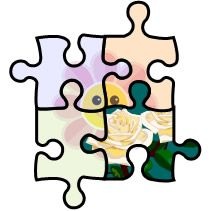|
As a university lecturer teaching freshman composition, my
duties include guiding students to write with clear organization and
flow. Many of my charges struggle not just with staying on topic in
their essays, but also with including text that clearly supports their
writing goal, whether describing a cultural event or making an argument.
Whereas cohesion is often explicitly taught in ESL and college writing
courses, less attention is given to producing writing that is coherent
(Witte & Faigley, 1981). Many of my students come to class with
techniques for connecting sentences, focusing primarily on transition
words, but they lack other tools for supporting the sense of the whole,
as well as an awareness of how to recognize cohesion and coherence at
both the global and local levels.
Using Joseph M. Williams’ text Style: Lessons in
Clarity and Grace (9th ed.) as my
inspiration and resource, I use one two-hour class period to help
students recognize both good and poor coherence, a mix of cohesive
devices, and the importance of addressing both in their writing.
I begin by explaining to students that the definitions of
coherence and cohesion vary and are sometimes interchanged depending on
the sources one refers to. What one source calls coherence or local coherence
another might call cohesion. Thus, to be clear, the
definitions I use for this lesson are coherence as a
sense of the whole (also called global coherence or unity) and cohesion as a sense of
flow (sentence to sentence, and paragraph to paragraph).
TECHNIQUES FOR TEACHING COHERENCE
I have found that an easy way to communicate the idea of
paragraph or essay coherence is to use Williams’ analogy of a jigsaw
puzzle. Using PowerPoint, I show my students a picture of a jigsaw
puzzle with an image of a large, smiling daisy on it. I explain how this
puzzle represents a paragraph, with each piece representing a sentence.
All of the sentences together should form a complete picture, in this
case the flower. If one sentence isn’t contributing to this big picture
in some way, it should be reconsidered. I then provide a new version of
the jigsaw puzzle image, with one of the pieces part of a rose garden
instead of part of the daisy.
  
I explain how this example symbolizes some of the writing
errors I see, with one sentence in a paragraph focused on a related
topic—roses and daisies are both flowers—but not contributing to the big
picture of the daisy. Similarly, the jigsaw puzzle of just the daisy
also represents an essay, with each piece a paragraph that contributes
to the big picture or message the author wishes to impart.
The fun begins as students read and discuss three
paragraphs―projected in PowerPoint or provided as a hard copies―that
demostrate common errors of coherence. The first example has one
sentence that obviouslyisoff topic of the main idea of the paragraph. I
ask students to individually read this paragraph from a student essay
about Mexican wedding traditions and identify the target sentence
(italicized here), which they do without difficulty. We then discuss the
paragraph as a class.
After the cake is served, a dance called The Money Dance
begins, which is when the bride dances with all family members that are
men and the groom dances with all family members that are women; right
before they dance with the couple, the family members must pin a 20
dollar bill or higher to the couples’ clothing. The family members make a
line waiting for their turn, usually taking 20 seconds to dance with
the bride or groom. The food served usually has beans,
tortillas, rice and meat, anything else added to the dish the couple
wishes to serve.
The second example paragraph is more difficult, with a sentence
that is on topic, but not supportive of the writer’s purpose. This
introductory paragraph is from a student’s opinion essay on whether
advertising is more beneficial or harmful in society. The target
sentence has been italicized here but isn’t italicized for the exercise.
Students read the paragraph and then discuss which sentence could be
removed to improve the introduction and why they think so. As with the
previous example, we then discuss this as a class.
Will Rogers once said, “Advertising is the art of convincing
people to spend money they don’t have for something they don’t need.” I
really do believe that advertising does manipulate the way that the
people in our society live. For that reason, I would have to say that
advertising is harmful to society. It is also beneficial though
I am leaning more towards seeing advertising as something that is
harmful to our society. Advertising consumes our thoughts and
our ability to have self-control over whether or not we need those
objects in order to make us happy. Advertisements get to us, the
consumers, because we are easily persuaded often to want the product
when we really do not need the product.
The third example paragraph has a tangential sentence that is
not on topic but is related to the topic of the paragraph. Like the
prior example, it does not move the essay forward. It may be more
difficult to locate. For this example, too long for this article, I use along,
descriptive paragraph from The Names: A
Memoir, by N. Scott Momaday, with
a sentence added by Richard Nordquist. Alternatively, instructors can
use examples from their own students’ writing (with permission).
At the end of this practice in locating sentences that do not
support coherence, students read a short sample essay to identify one
paragraph that does not contribute to the purpose. They then take out
their own essays in progress and are instructed to do the
following:
- Identify the topic and purpose of every single paragraph.
Write it directly on the essay or on a separate sheet of
paper.
- Do you go off-topic at all in any paragraph? Underline or highlight questionable sentences.
- Does your essay have good coherence overall? Mark paragraphs that might need attention.
TECHNIQUES FOR TEACHING COHESION
To introduce cohesion, I ask students to read two unlabeled
paragraphs of nearly identical content but different construction. One
paragraph offers old information before new, uses connecting words and
phrases, and contains references to prior information through pronouns,
determiners (e.g., this, that), and repetition of ideas with different
wording. The other paragraph breaks all conventions of cohesion and thus
is difficult to follow. After asking students which of the two
paragraphs seems to flow better, we discuss why that is. They usually
identify the connecting words first, and I point out any cohesive
devices that they haven’t noted on their own. We examine examples of
cohesion within paragraphs and then between paragraphs.
Once they have written down the elements of cohesion, we do a
strip-story activity in class—that familiar activity in which students
are provided the first sentence of a story, asked to add two sentences
of their own, and then told to pass the stories around in small groups
for additional sentences. The focus in this activity is cohesion, not
coherence; although stories can wander, they must be cohesive, so
students read what was written before their turn. After one round of
writing, students underline the cohesive elements of each story and
check with classmates. They identify which story in each group has the
best flow and explain why.
To keep these concepts of cohesion and coherence separate, I
then have a student read aloud the following paragraph from Style that has great cohesion but no coherence—to a
humorous effect. After the first and second sentences I ask what the
class expects to follow. As the student continues reading aloud,
laughter usually spreads in the class, and then we discuss
why.
Sayner, Wisconsin, is the snowmobile capital of the world. The
buzzing of snowmobile engines fills the air, and their tank-like tracks
crisscross the snow. The snow reminds me of Mom’s mashed potatoes,
covered with furrows I would draw with my fork. Her mashed potatoes
usually make me sick – that’s why I play with them. I like to make a
hole in the middle of the potatoes and fill it with melted butter. This
behavior has been the subject of long chats between me and my
analyst.
Turning to their own essays again, students are instructed to do/answer the following:
- Underline all the cohesive devices in your essay.
- Are they all the same type, or do you use a variety?
- Is your essay “jumpy” at all? If so, make some changes now
to give it good cohesion within paragraphs and also between paragraphs.
Have a partner check your improvements.
In sum, my approach is to explain the concepts, have students
practice recognizing examples and errors in writing samples of
increasing difficulty, and then have them look for good models and
errors in their own work. If the lesson is done well, students have
tools for checking the cohesion and coherence of future writing
assignments.
REFERENCES
Williams, J. S. (2007). Style: Lessons in clarity and
grace (9th ed.). New York, NY: Pearson Longman.
Witte, S. P., & Faigley, L. (1981). Coherence,
cohesion, and writing quality. College Composition and
Communication, 32, 189-204.
Belinda Braunstein coordinates the English Language
Institute and the Summer Bridge Program at the University of California,
Merced. She works with both international teaching assistants and
incoming generation 1.5 freshmen. | 
